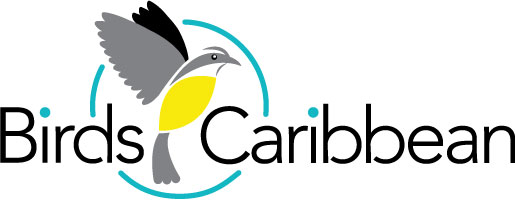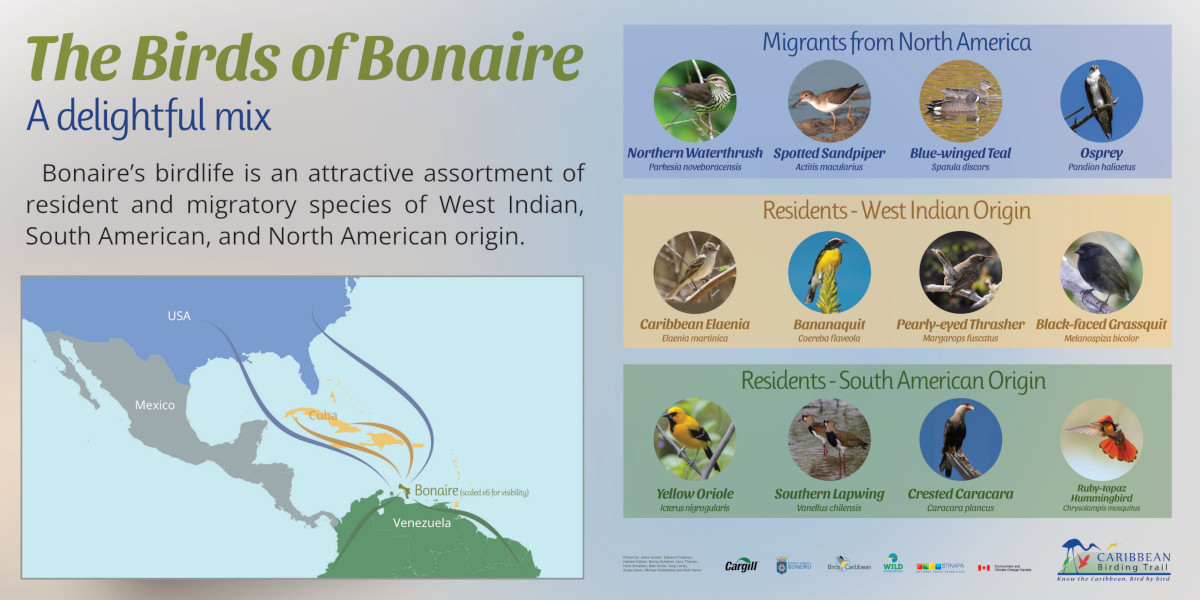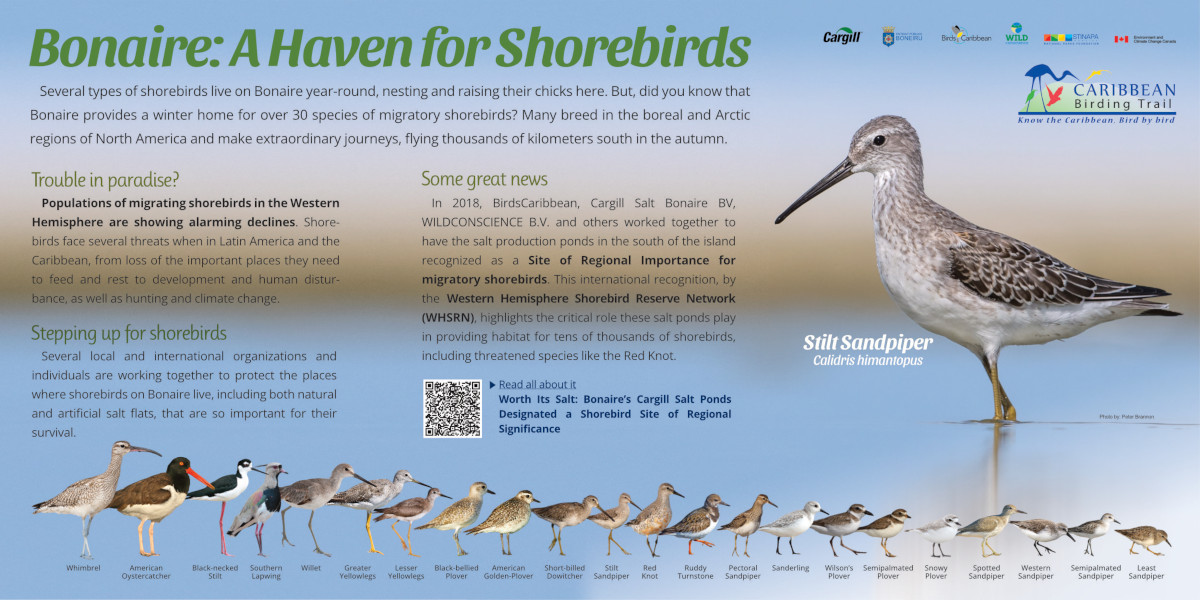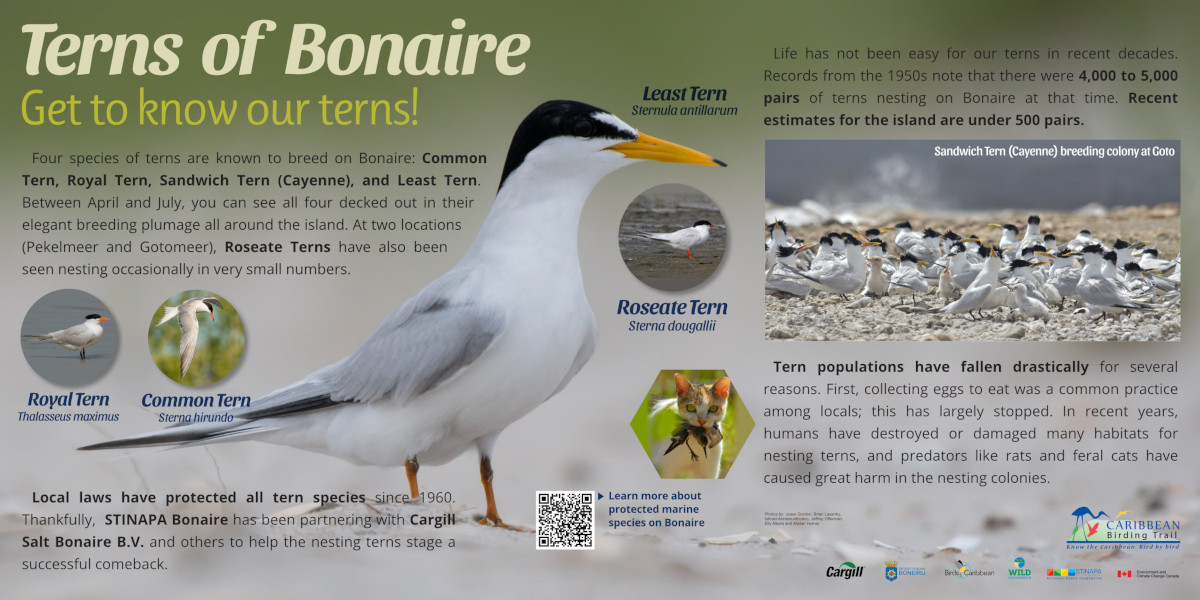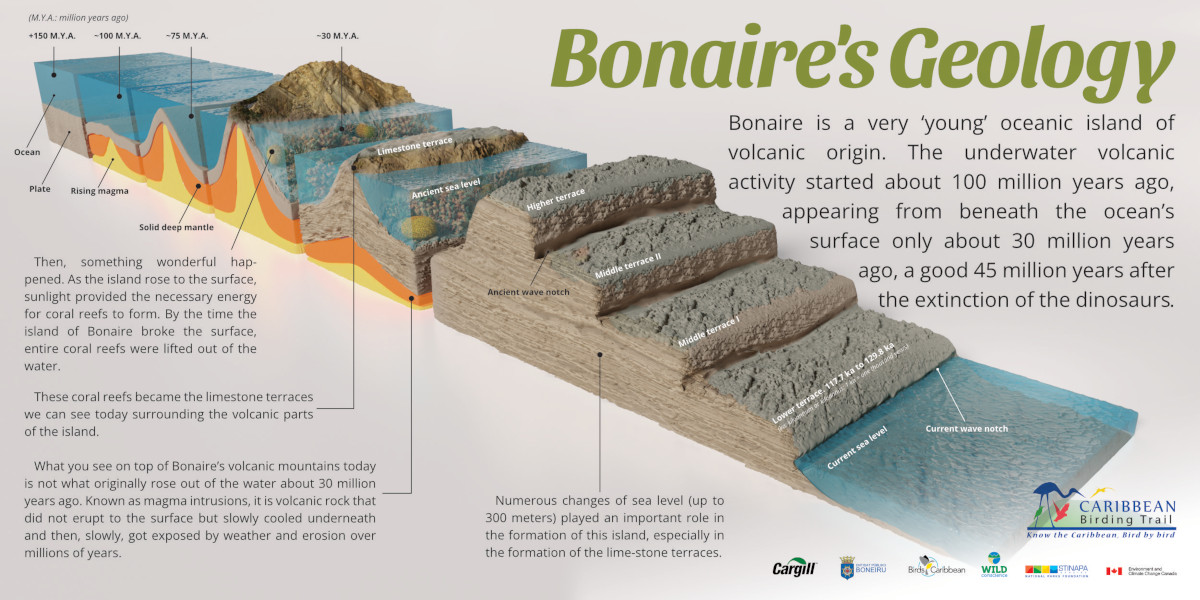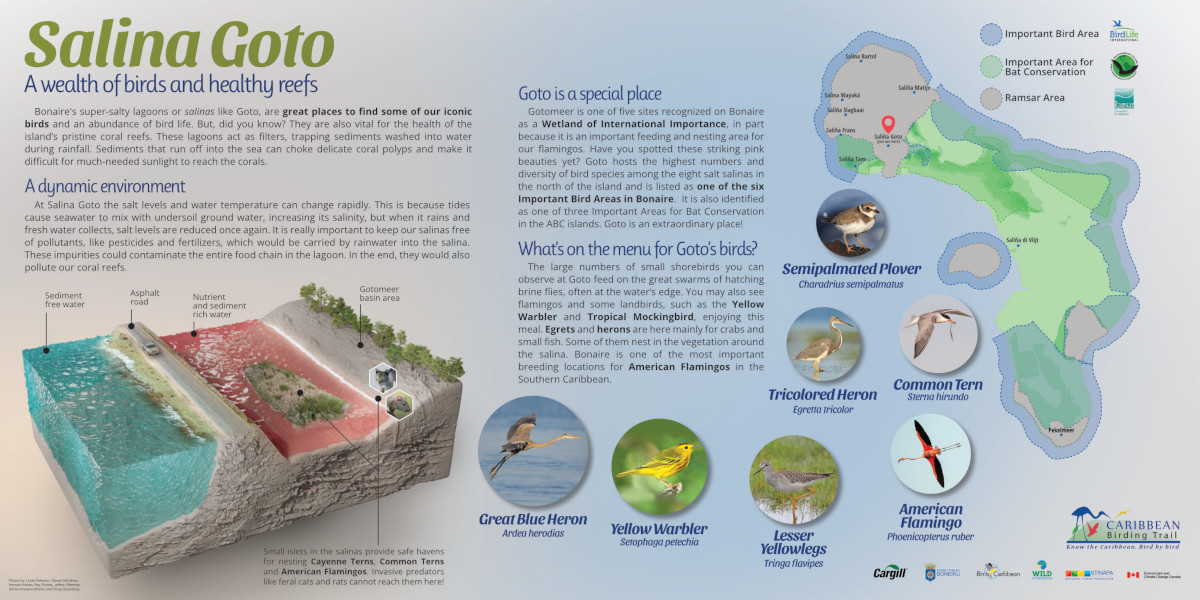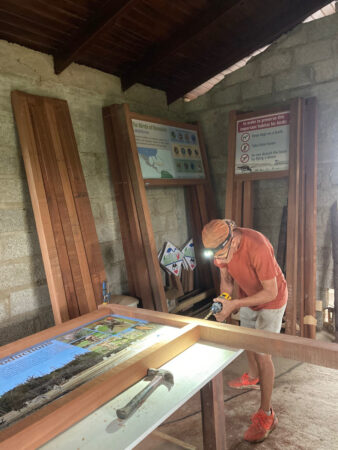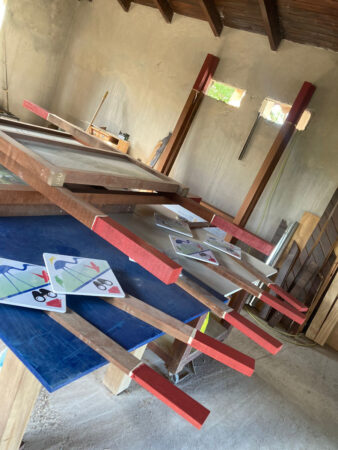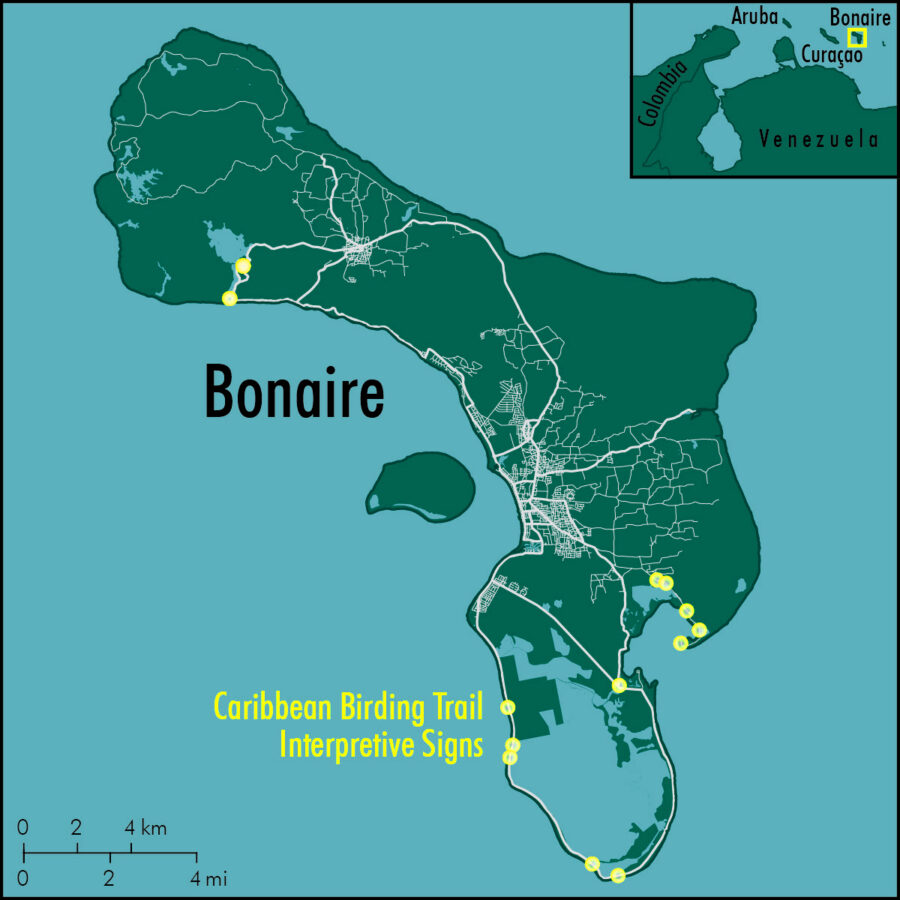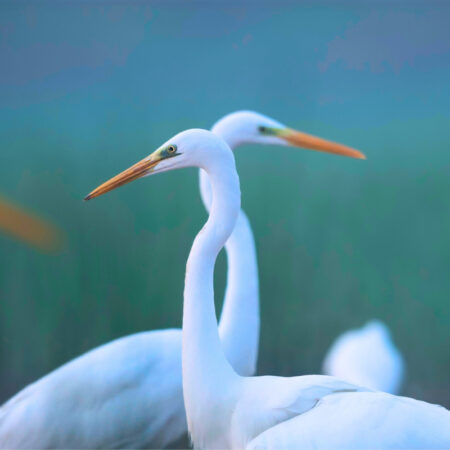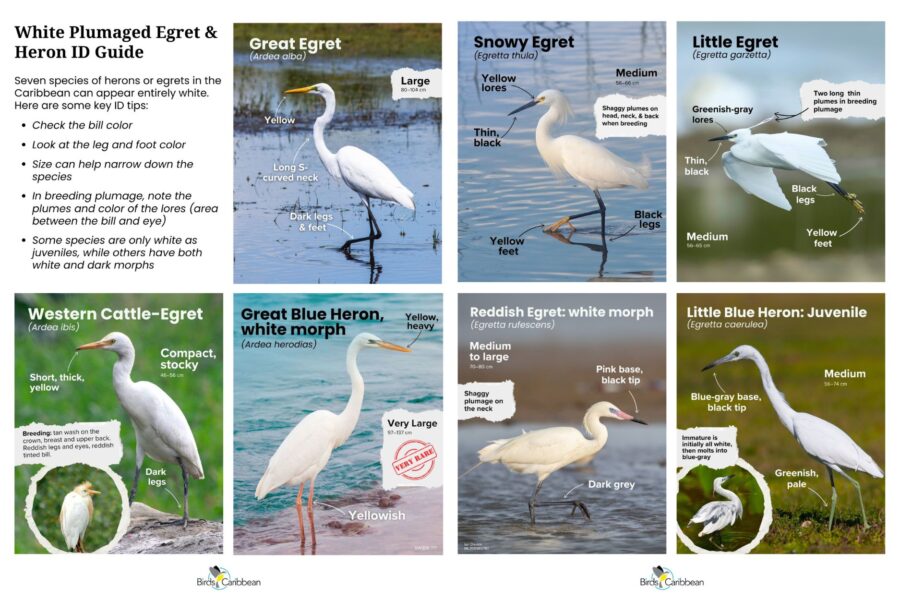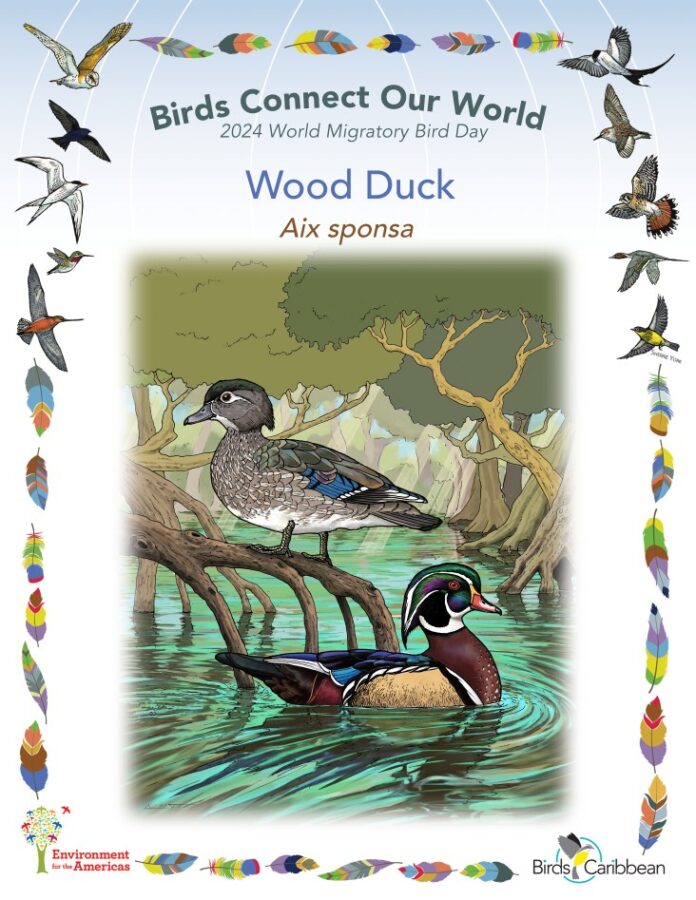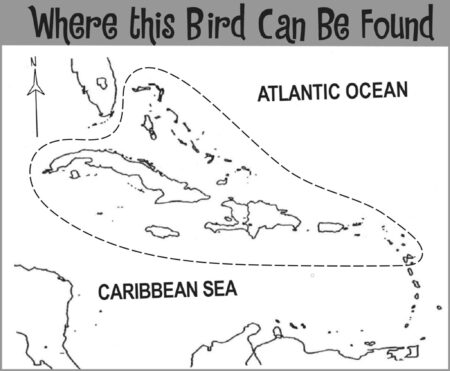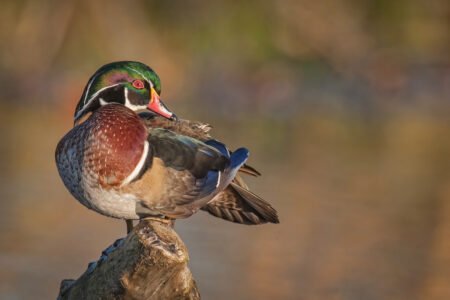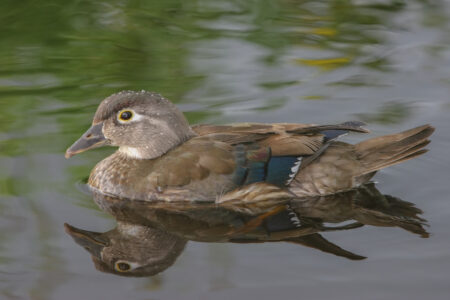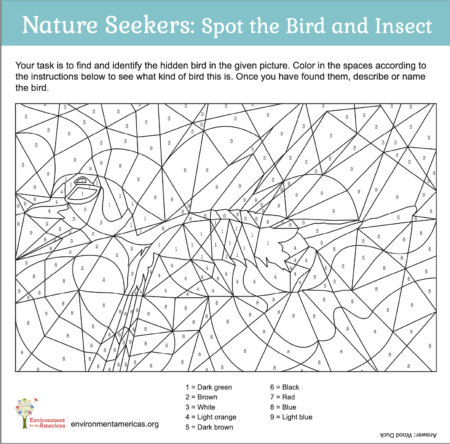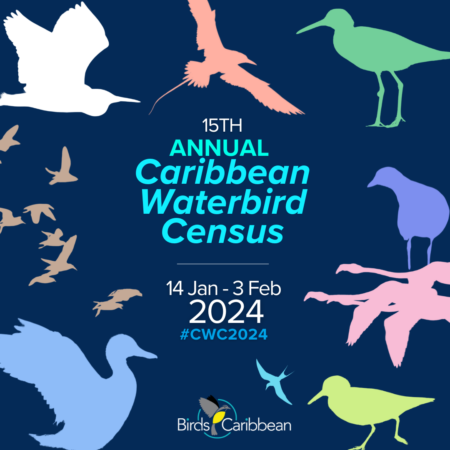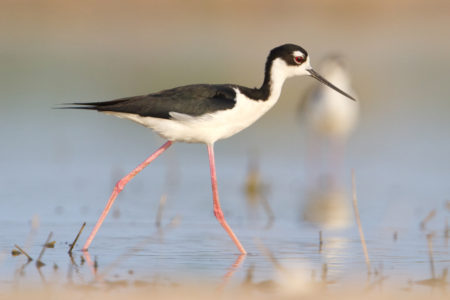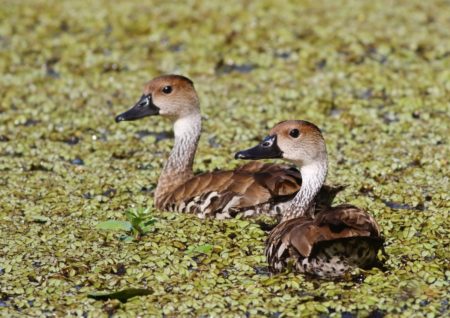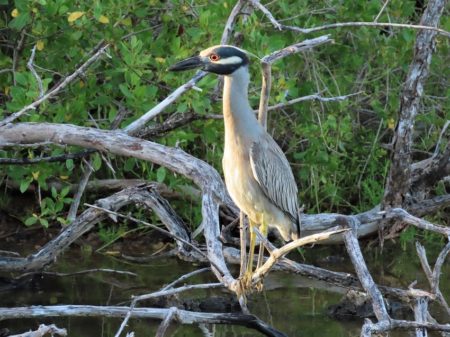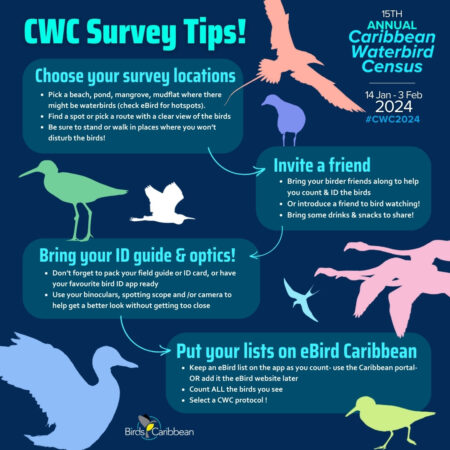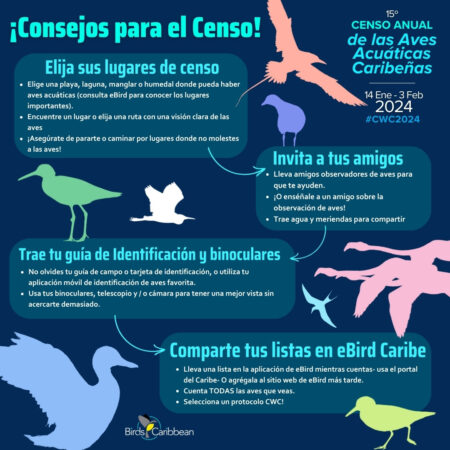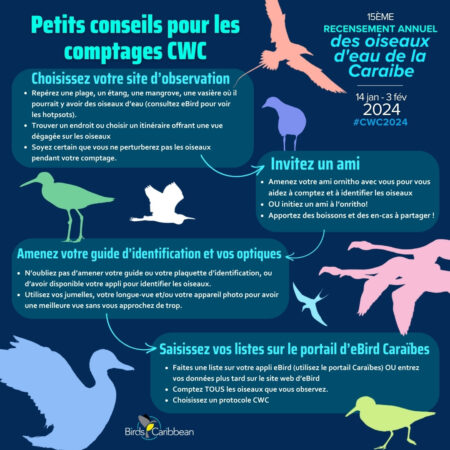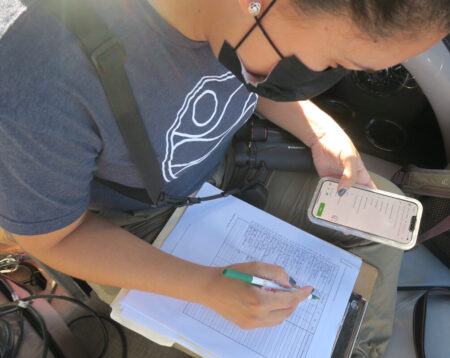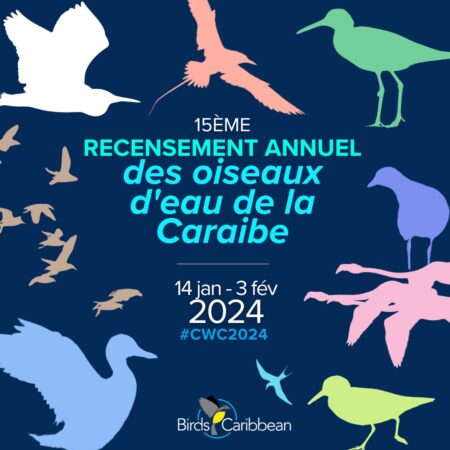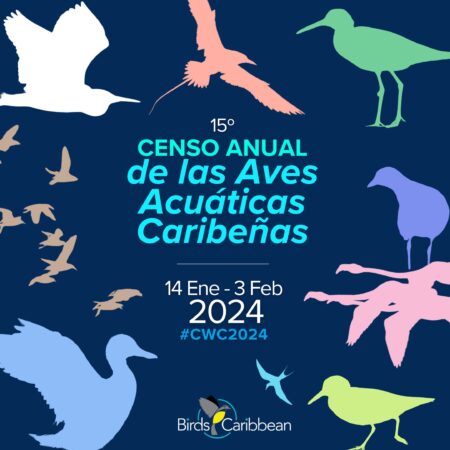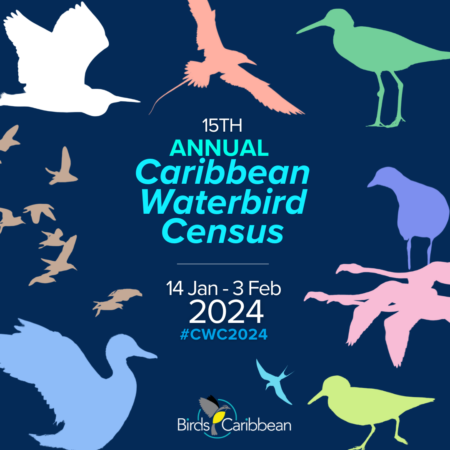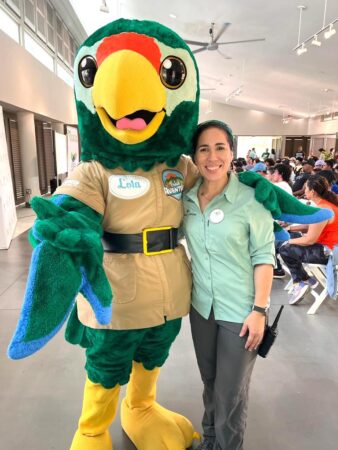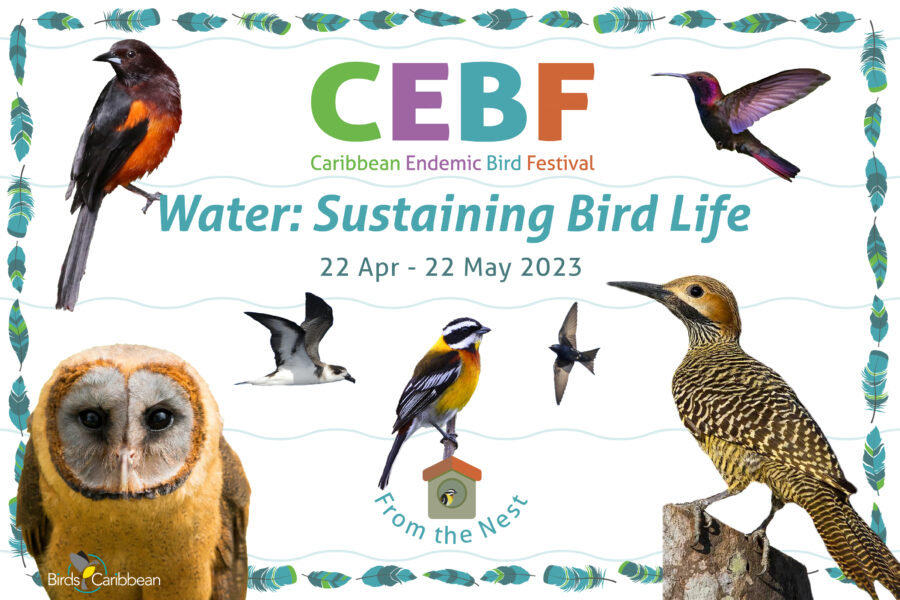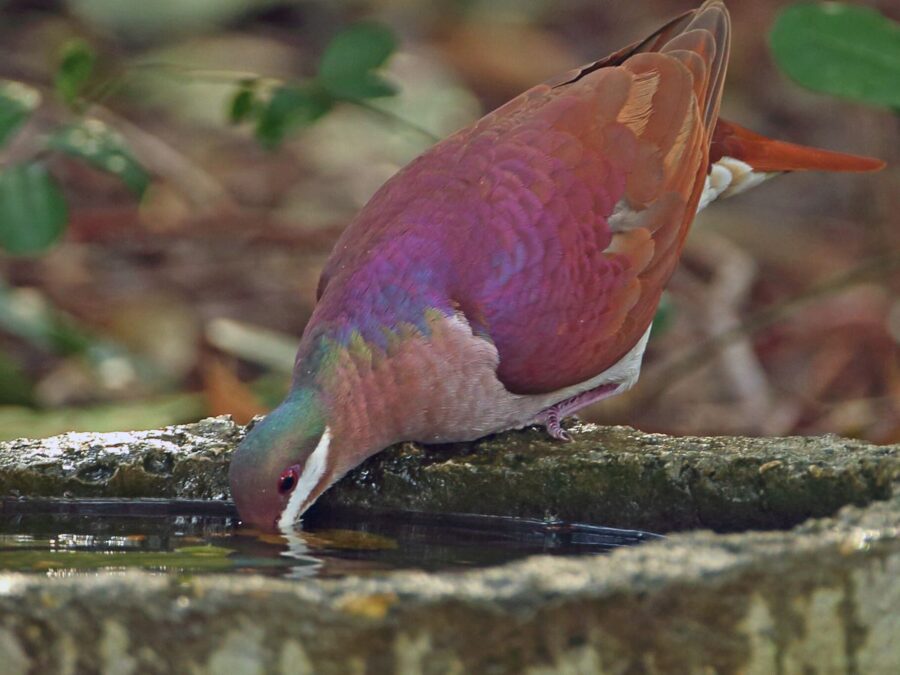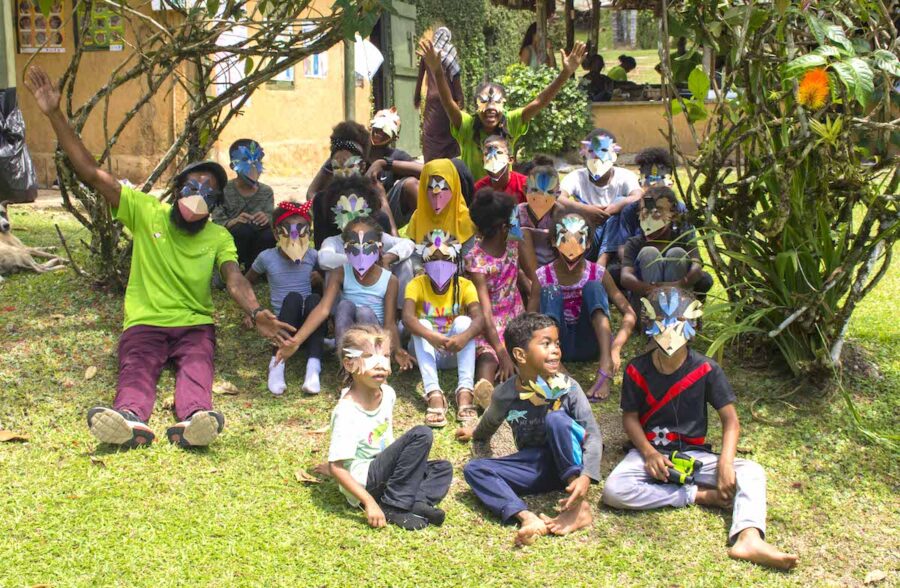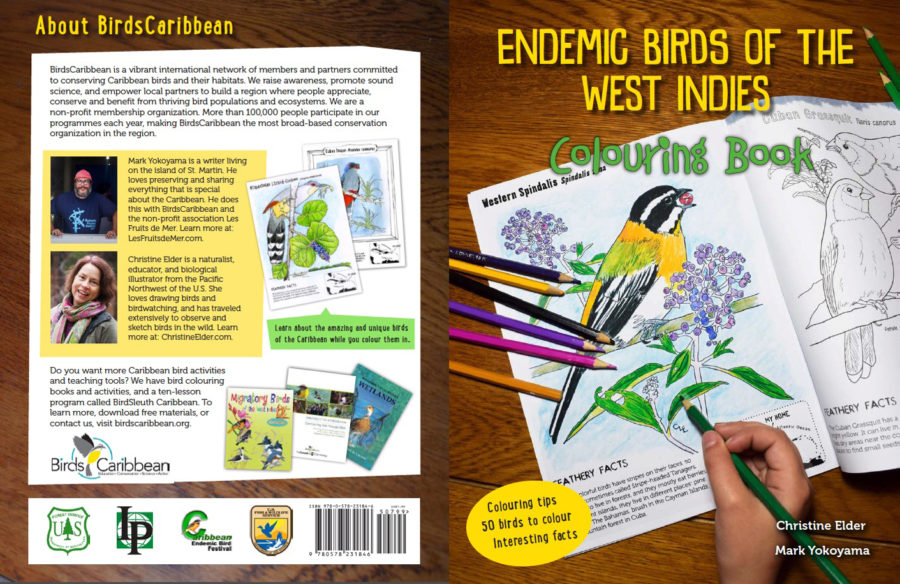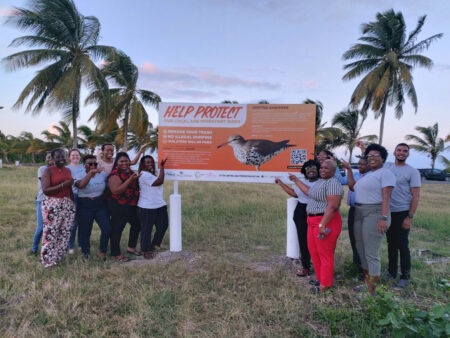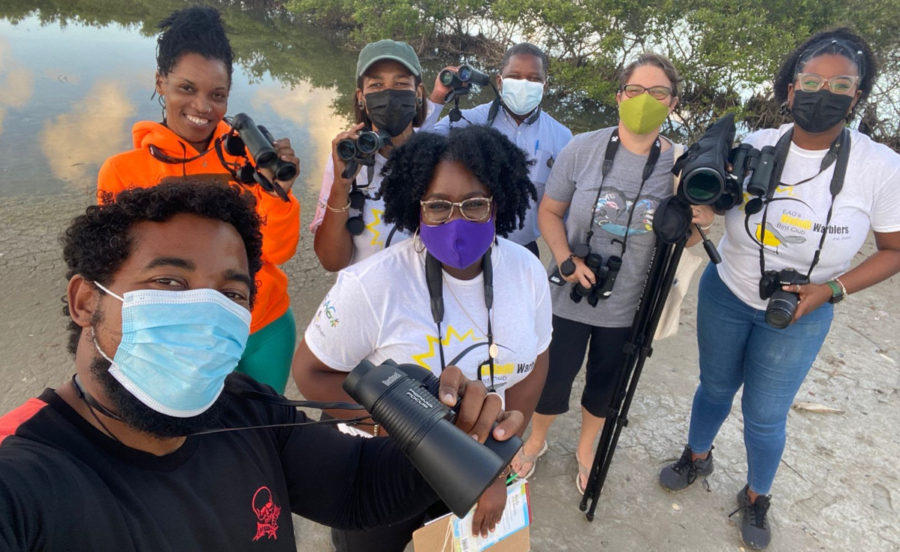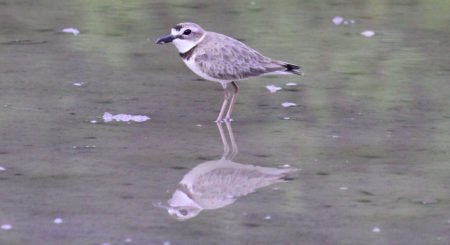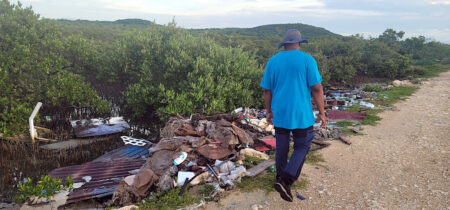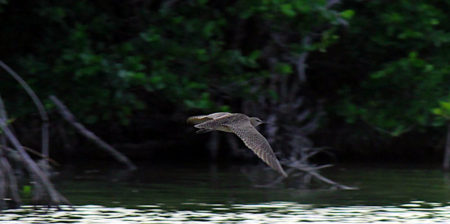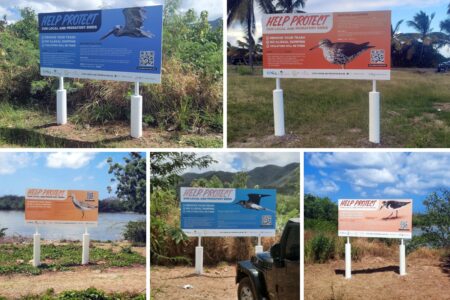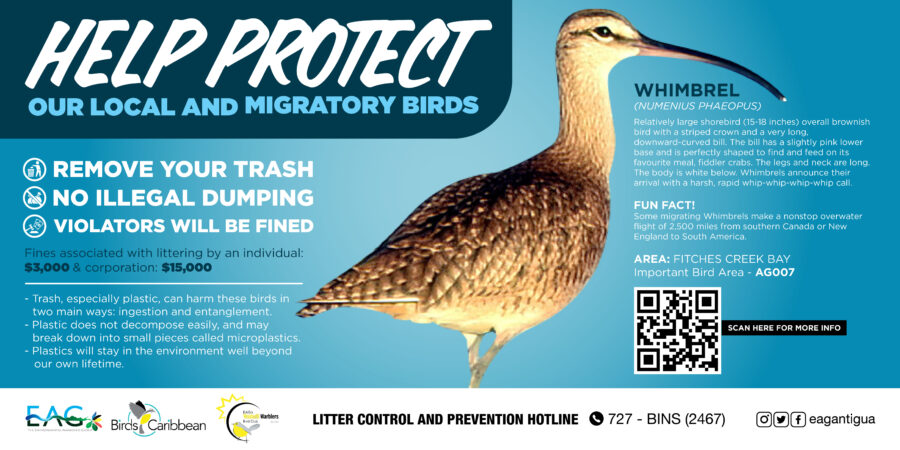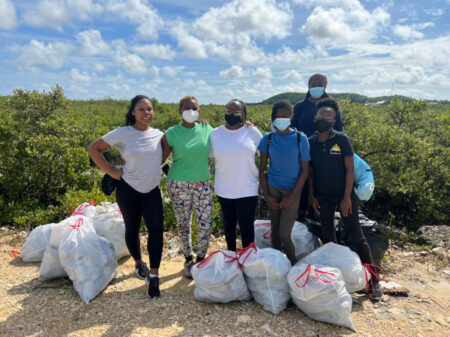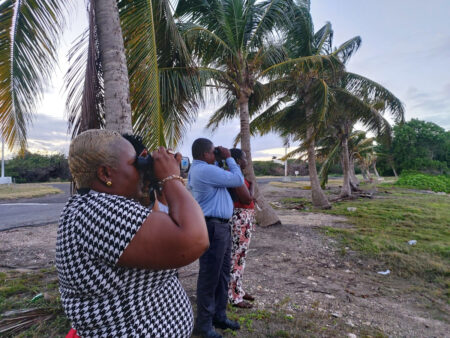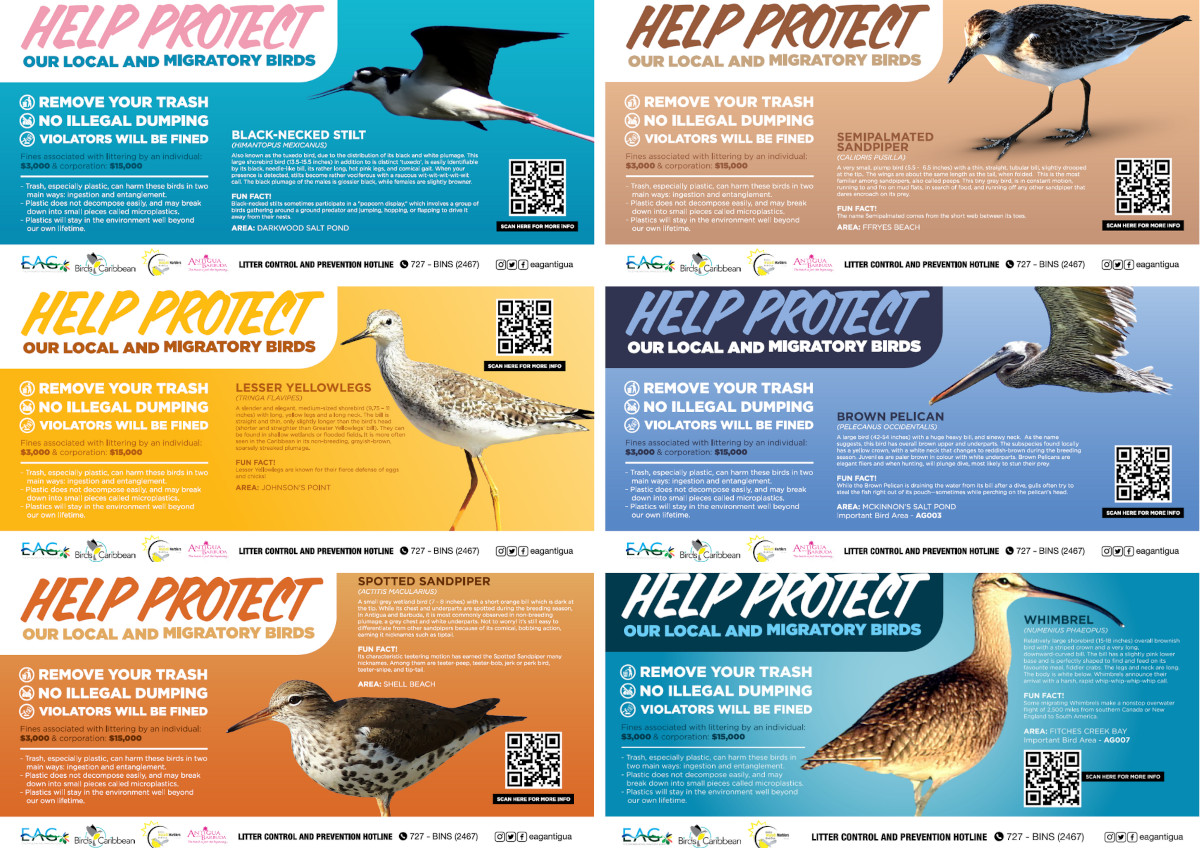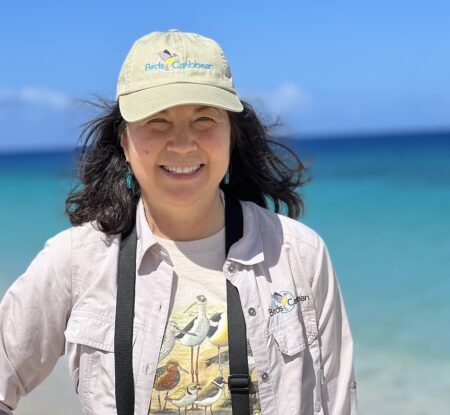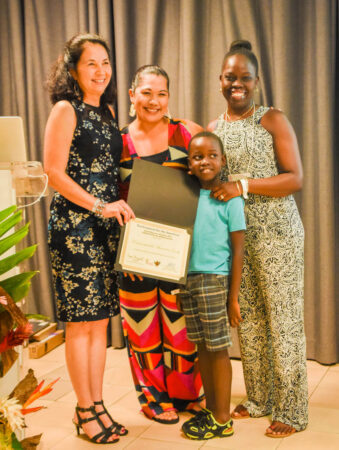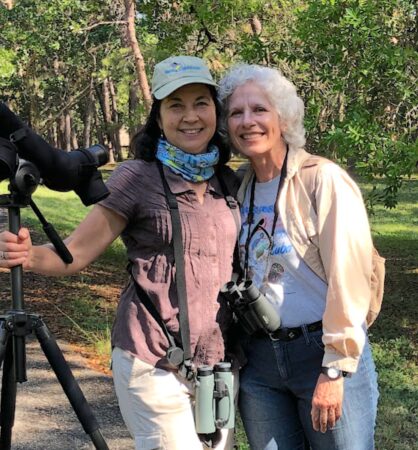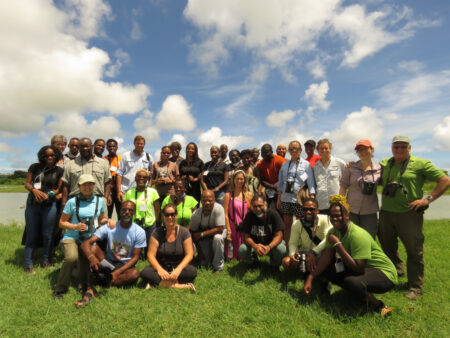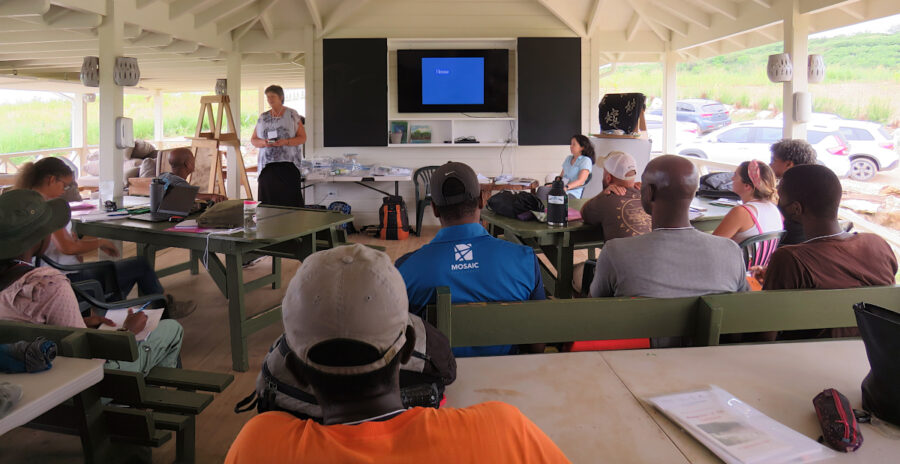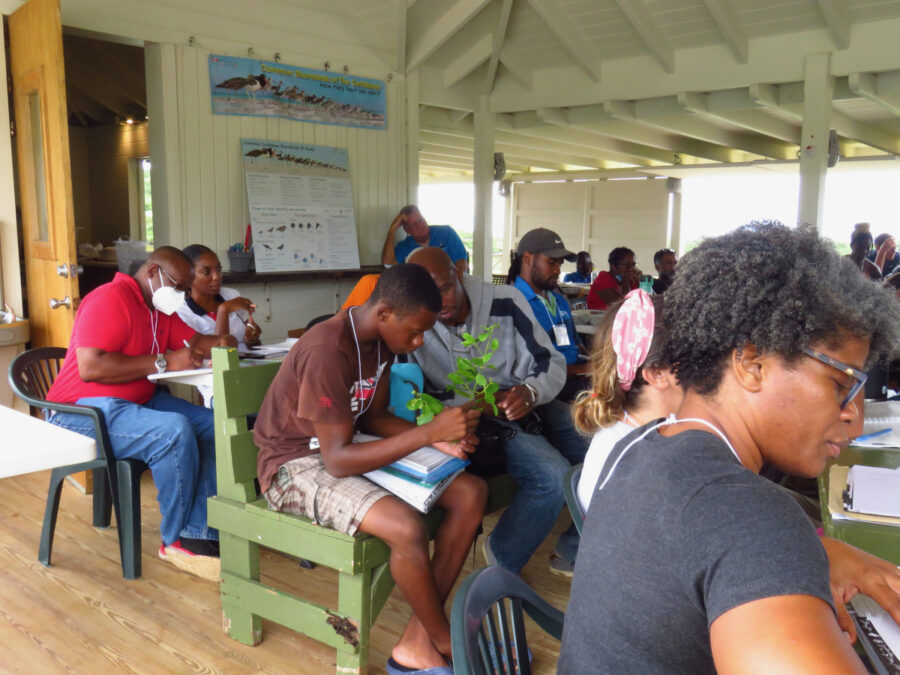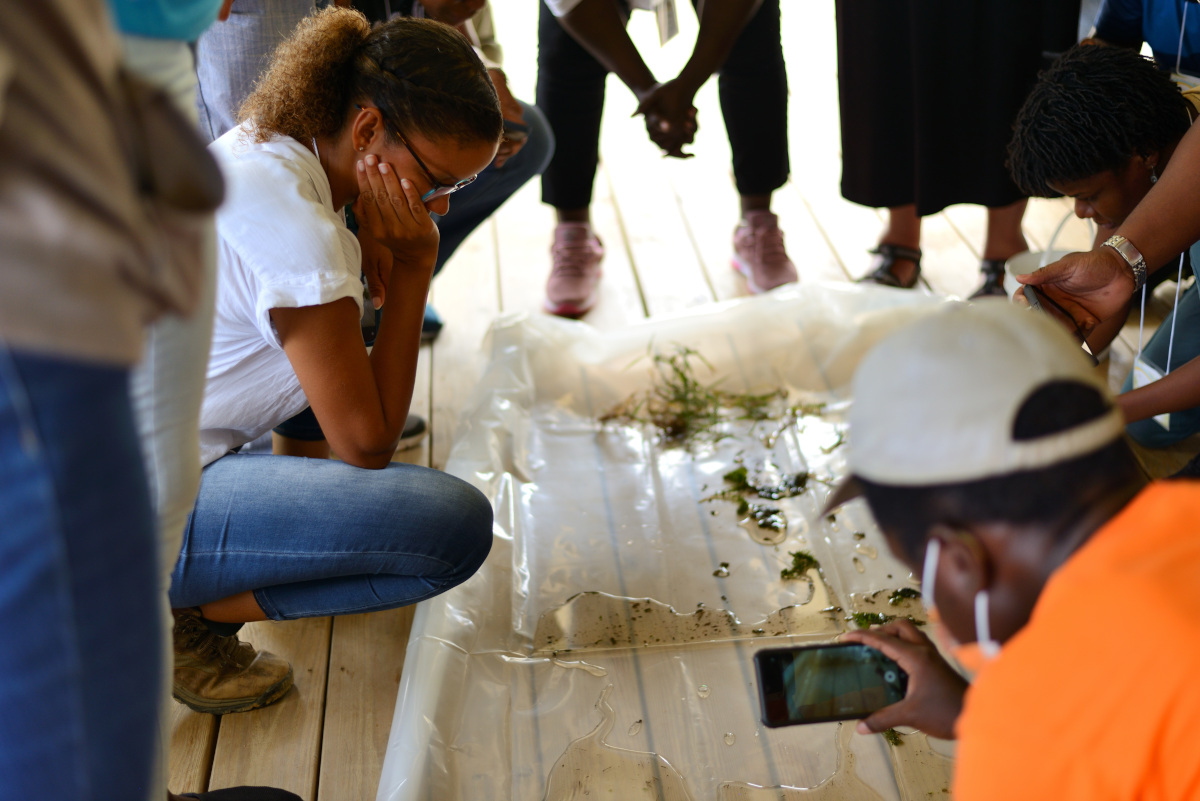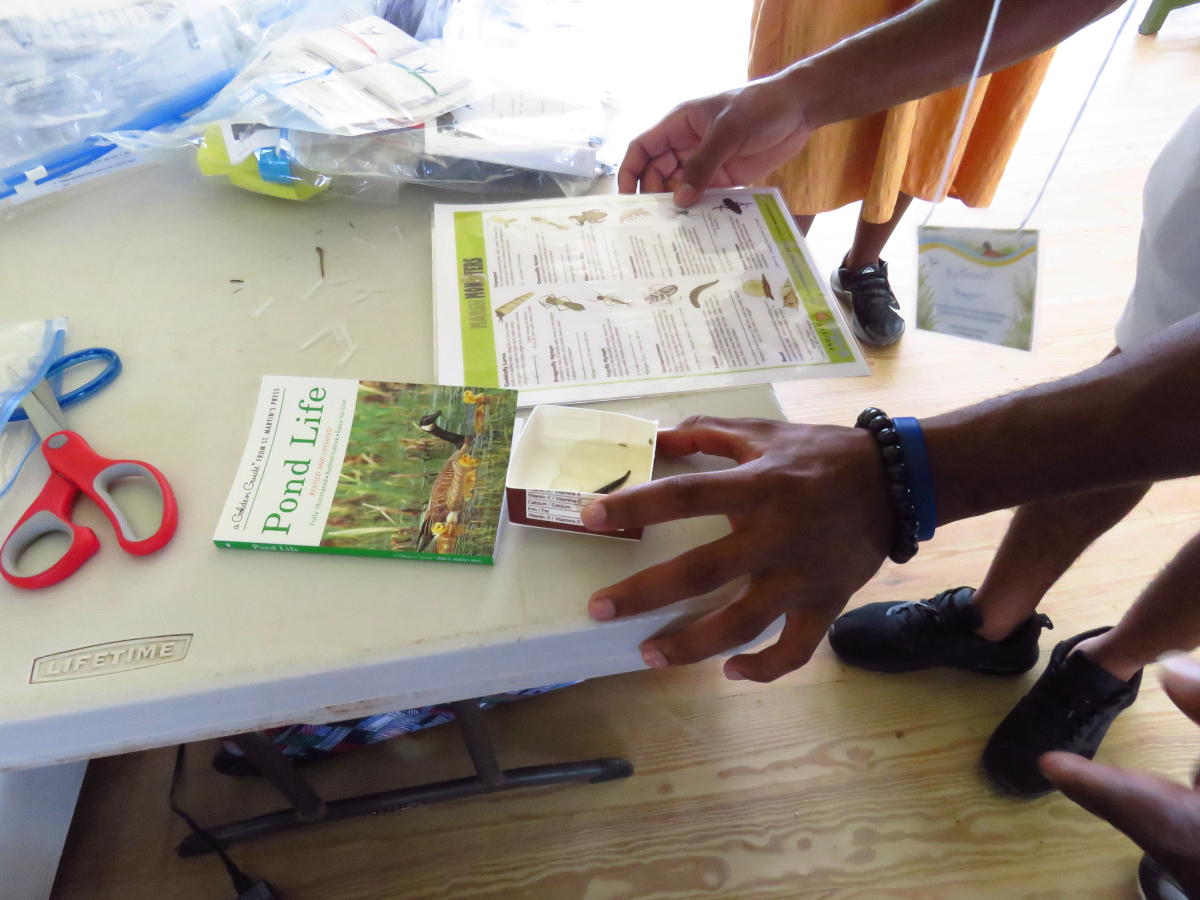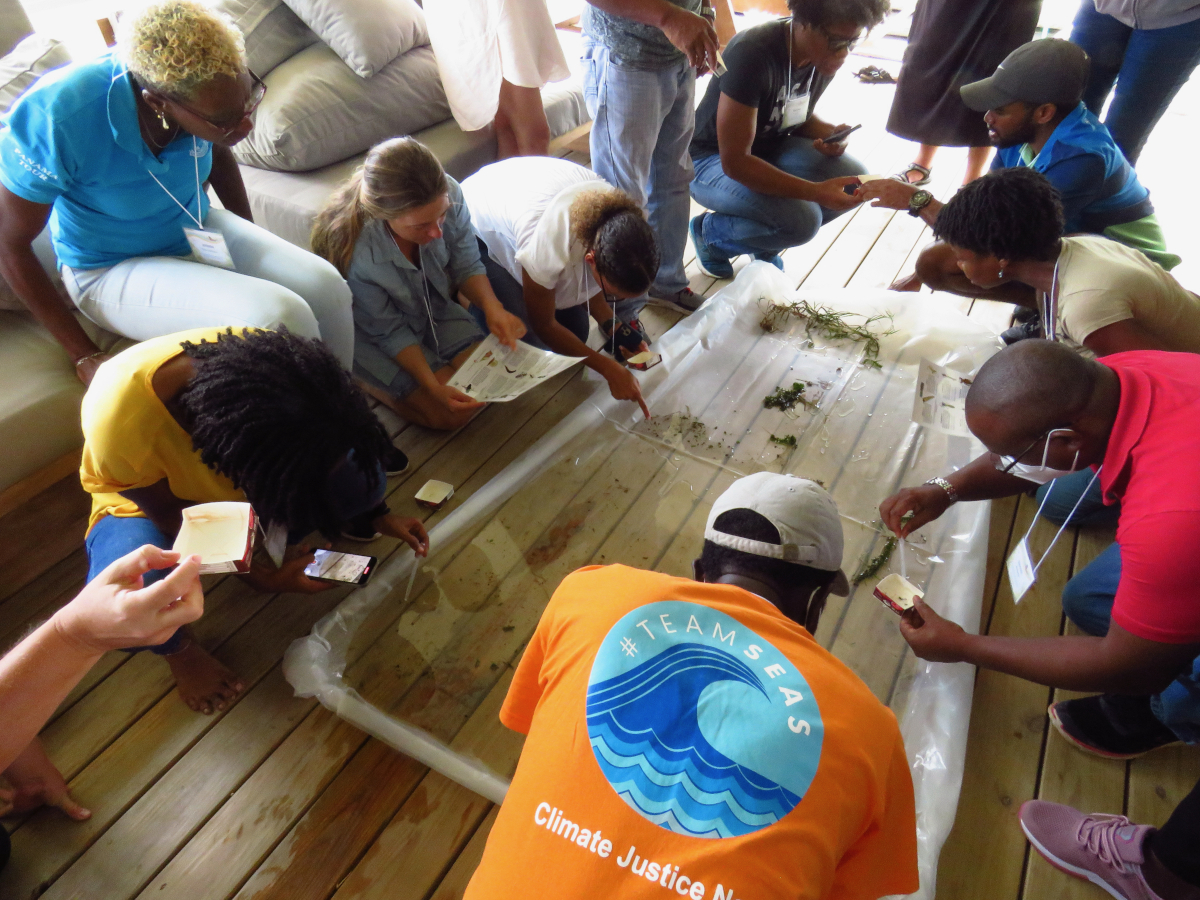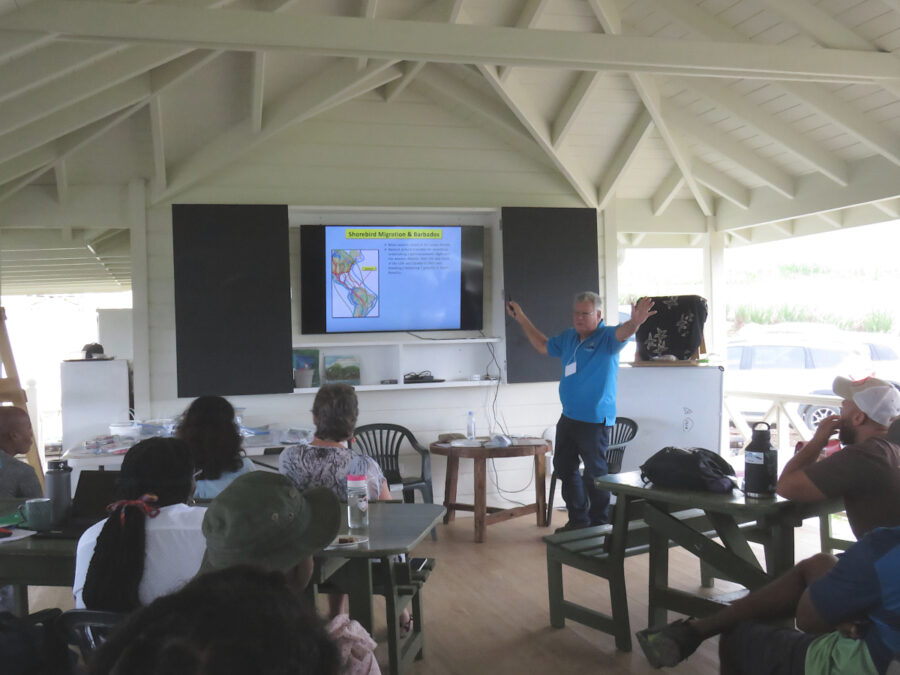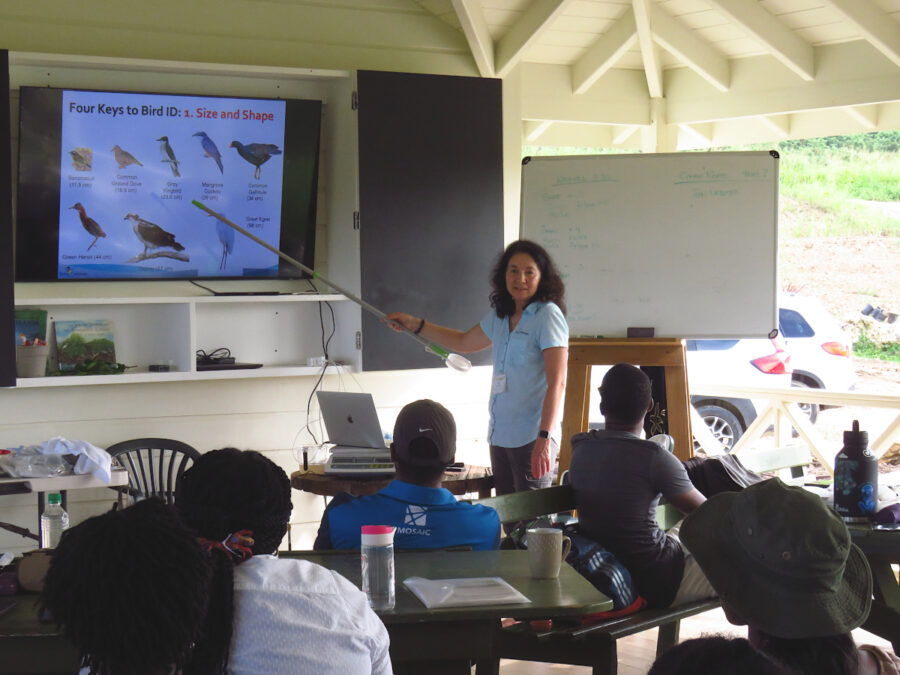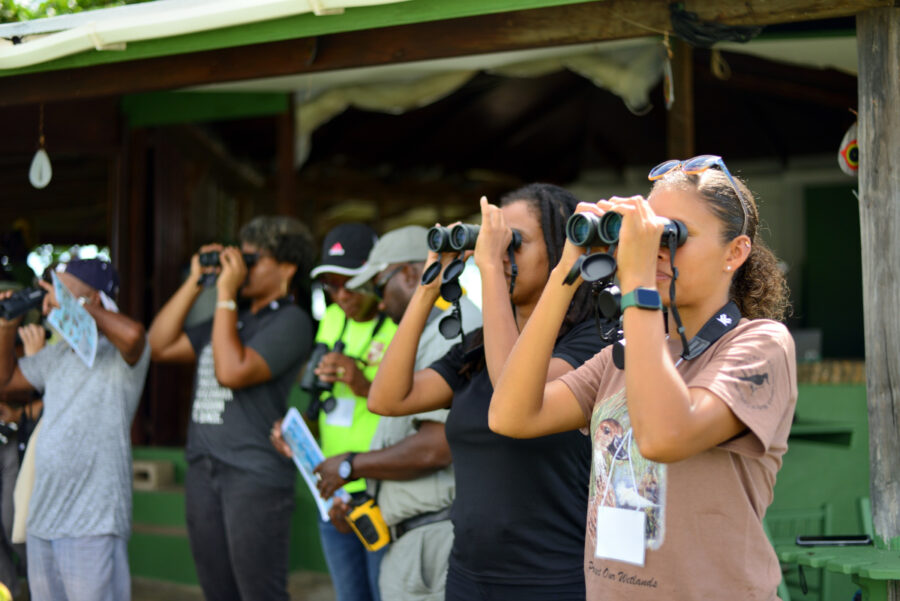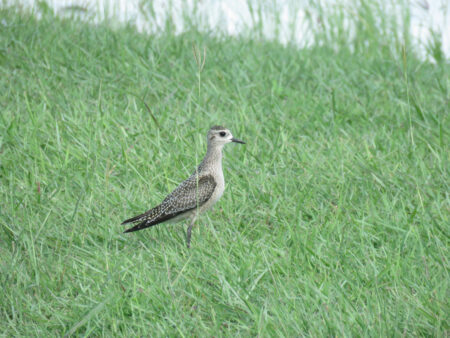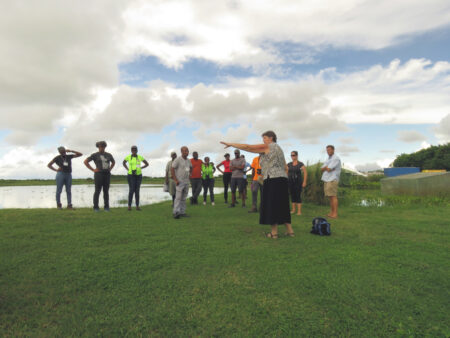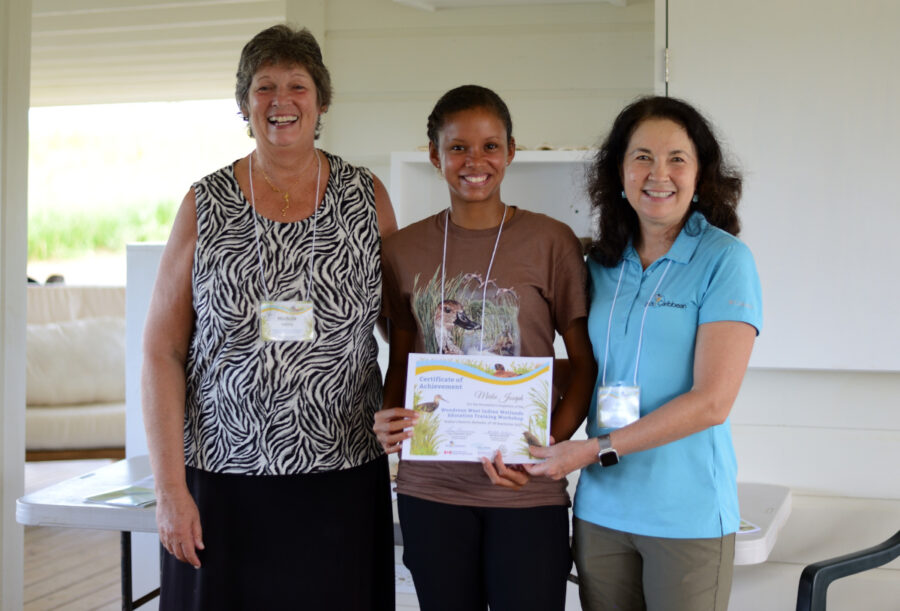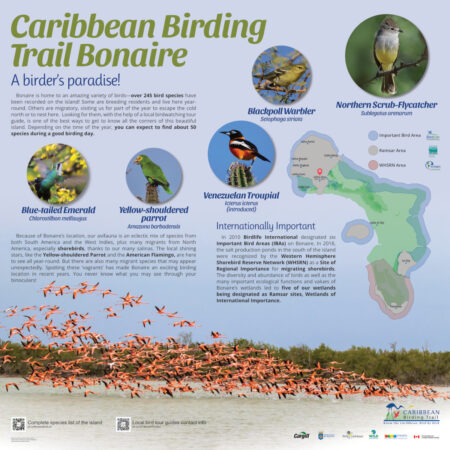 Bonaire is a birder’s paradise, with 250 species recorded on this small Caribbean island, which measures just 3 to 7 miles wide and approximately 24 miles long. To celebrate and share the island’s incredible avian diversity, a new set of interpretive signs has been installed at key birding sites across the island—thanks to a longstanding and inspiring partnership between BirdsCaribbean, WILDCONSCIENCE, and Cargill Salt, LLC. With input from local birders, tour guides, and conservation organizations, these beautiful signs invite residents and visitors alike to explore, learn about Bonaire’s birds, wetlands, and unique ecosystems and will help people to find some great places for bird watching on Bonaire!
Bonaire is a birder’s paradise, with 250 species recorded on this small Caribbean island, which measures just 3 to 7 miles wide and approximately 24 miles long. To celebrate and share the island’s incredible avian diversity, a new set of interpretive signs has been installed at key birding sites across the island—thanks to a longstanding and inspiring partnership between BirdsCaribbean, WILDCONSCIENCE, and Cargill Salt, LLC. With input from local birders, tour guides, and conservation organizations, these beautiful signs invite residents and visitors alike to explore, learn about Bonaire’s birds, wetlands, and unique ecosystems and will help people to find some great places for bird watching on Bonaire!
The story of these new signs began in 2014, when Daniel DeAnda, General Manager at Cargill Salt, attended a BirdsCaribbean Wetlands Education Training Workshop hosted by local NGO STINAPA. The two-day workshop addressed the destruction and degradation of wetlands due to a widespread lack of awareness about their ecological value—and how education, especially through teachers, could help reverse this trend. The workshop emphasized wetlands as vital habitats for birds, and the powerful role that birds can play in connecting people to nature.
After the first day of the workshop, Daniel approached facilitators Lisa Sorenson, Executive Director of BirdsCaribbean, and Michele Kading, a wetlands educator, with an invitation: “I think you need to visit our salt ponds—you might like what you see there.” (That turned out to be a major understatement!) The team toured the salt ponds that evening and was astonished by the thousands of shorebirds present—an ecological treasure that, at the time, was largely unrecognized.
This visit marked the beginning of a long and productive partnership. Although hesitant at first, Cargill gave permission to BirdsCaribbean to conduct waterbird surveys of the salt ponds. Over the next three years, biologist Fernando Simal of WILDCONSCIENCE, led intensive surveys revealing that the ponds were a regionally important stopover site for tens of thousands of migratory shorebirds, including Near Threatened Red Knots and Vulnerable Short-billed Dowitchers.
This data led to the salt ponds being designated a Site of Regional Importance in the Western Hemisphere Shorebird Reserve Network (WHSRN)—only the second such site in the Caribbean to receive this prestigious recognition.
Soon after, building on our growing partnership with STINAPA Bonaire, BirdsCaribbean launched the Caribbean Birding Trail (CBT) on the island with an Interpretive Guide Training Workshop in 2016. Since then, bird tourism has steadily grown, and awareness of Bonaire’s birdlife has flourished.
From Vision to Reality: Signs for Birds, People, and Place
To build on this momentum, the CBT team envisioned a network of interpretive signs at key birding locations across Bonaire. These are the kinds of signs you might see in a museum or nature reserve—designed to tell engaging stories about the place you’re visiting, fostering deeper connection, greater appreciation and lasting impressions.
The goal? To engage visitors and locals alike in learning about the island’s amazing birdlife and its vital role as a stopover and wintering site for thousands of migratory shorebirds, as well as providing homes for many resident species.
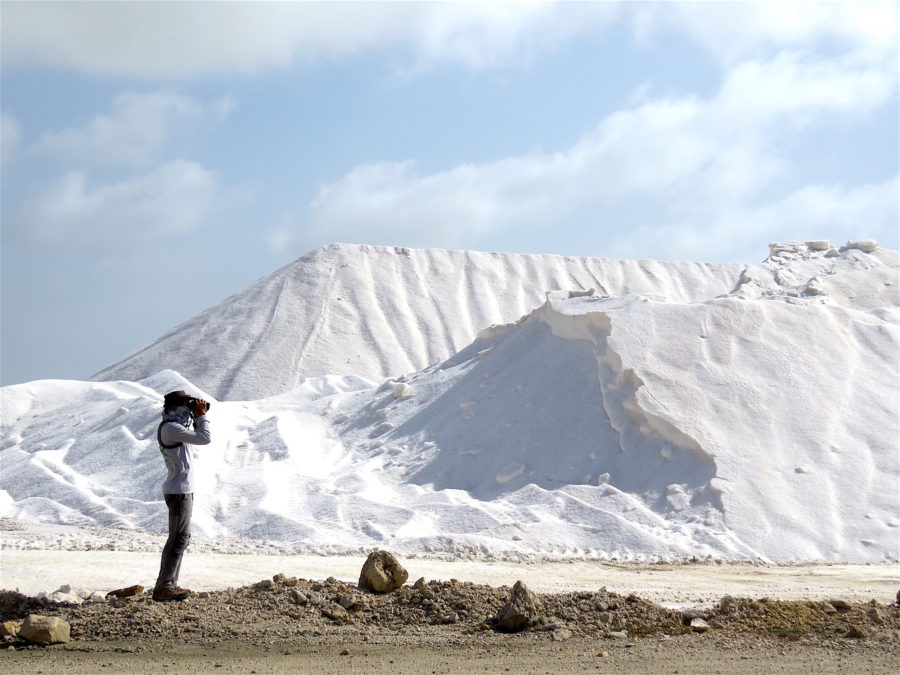
With generous funding from Cargill Salt and support from BirdsCaribbean, Fernando assembled a working group of local bird guides, photographers, and conservation professionals. The Caribbean Birding Trail Bonaire (CBTB) group—20 enthusiastic participants—helped scout locations, review drafts, and even contributed photos for the signs.
Field trips were organized to select the best locations—sites where visitors could safely observe birds with minimal disturbance. These visits informed the development of content that is both impactful and informative, highlighting not only Bonaire’s birdlife, but also the island’s geology, wetland ecology, and conservation efforts. These elements are deeply connected, offering a holistic understanding of Bonaire’s unique ecosystems and their vital role in supporting both migratory and resident birds.
Beautiful Signs, Built to Last
Once the locations and content were finalized, local graphic designer Juan C. Riveros brought the signs to life. Guided by the CBTB group and working closely with BirdsCaribbean and WILDCONSCIENCE, Juan designed 15 vibrant interpretive signs to place at key birding sites. He also created a set of eye-catching “CBT Birding Site Marker” signs to point the way to upcoming birding locations. His striking layouts combine text, imagery, and color in a way that’s both visually engaging and highly informative.
A selection of Juan’s beautiful designs
In Bonaire’s harsh environment, we wanted the signs to not only look beautiful, but stay beautiful for as long as possible. To ensure durability, we used PVC panels with the designs printed on weather-treated vinyl. And to minimize environmental impact, the signs were sized to fit exactly within standard PVC panels, meaning there was zero material waste at the end!
The finished panels were mounted on beautiful custom hardwood frames, handcrafted by Juan and Fernando at the WILDCONSCIENCE workshop.
Juan and Fernando’s carpentry skills brought the signs to life—sturdy, beautiful, and built to last.
Installation: A Team Effort
As our Geology sign explains, one thing Bonaire is not known for is soft soil! So getting sign posts firmly into the ground across multiple locations in the island’s rocky limestone terrain was going to be tough work!
Enter BonBèrdè, a local reforestation and land management company that stepped in with heavy equipment to help drill into the tough limestone. It was great to see heavy machinery working for nature, not against it!
Thanks to the hard work of the BonBèrdè crew and the entire team on the ground, the signs are now securely in place. Seeing the final products installed—ready to educate and inspire visitors and locals alike about Bonaire’s incredible birdlife and natural heritage—was an incredibly satisfying moment at the end of a long and rewarding process.
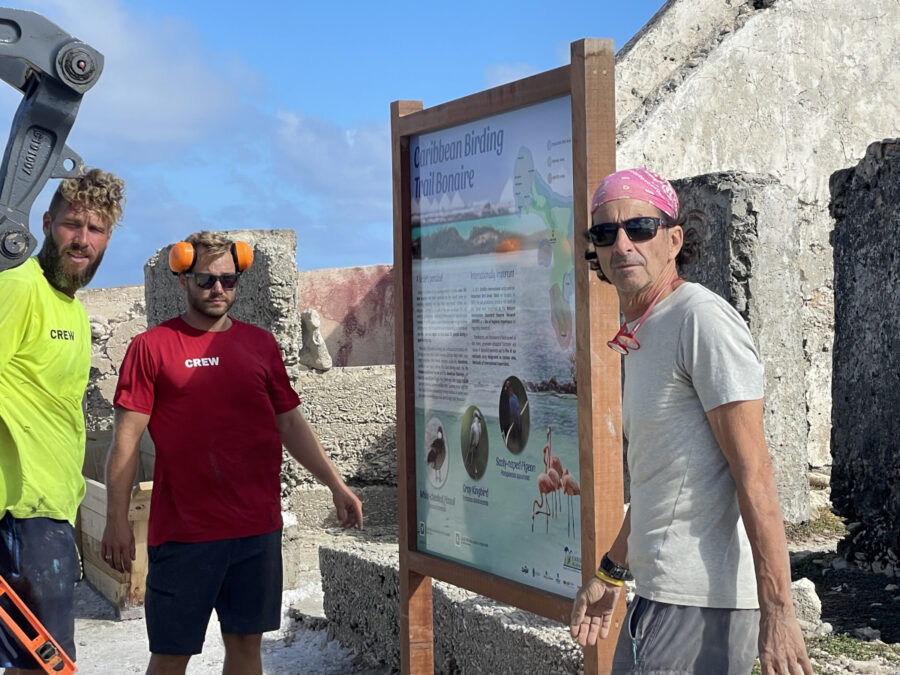
Celebrating the Results
The signs are already making an impact—birders and tourists are stopping to read and explore. Susan Davis, a CBT-trained guide and founder of Bonaire Bird Tours, shared: “The signs are beautiful. They help people identify the local birds and understand the value of our wetlands—especially important on an island where development is accelerating.”
Susan also notes that many visiting birders are intrigued by the broader concept of the Caribbean Birding Trail, especially once they realize that Bonaire is just one stop along a network of birding destinations throughout the region. She’s delighted to see how engaged they are—stopping to read every sign and marveling at the colorful depictions of local species. “I want to find this bird!” some exclaim, excited to spot a potential new lifer.
What’s more, she has noticed even travelers drawn to Bonaire for its world-class diving, snorkeling, or windsurfing often pause to read the signs. This unexpected engagement helps introduce birding to a wider audience. Bonaire’s slogan, “It’s in our nature,” rings especially true—visitors come for the island’s natural beauty, and the new signs reveal yet another layer of its rich ecological appeal.
Some of the newly installed signs:
Lisa Sorenson, Executive Director of BirdsCaribbean, reflected on the journey during a recent call with Daniel DeAnda: “From that first tour of the salt ponds in 2014 to WHSRN designation, guide training, and now these amazing signs—this has been a truly meaningful partnership. Conservation doesn’t happen overnight. It takes time, trust, and collaboration. These signs will inspire people to learn about, respect, and actively protect Bonaire’s natural heritage for years to come.”
Daniel added: “When I first met Lisa, I was a bit apprehensive about the whole ‘birding’ thing. But over time, I’ve come to see the importance of our wetlands and the birds that depend on them. With the signs now up, everything has come full circle. They help people recognize the value of these incredible migratory birds that rely on Bonaire’s wetlands to rest and refuel. I’m proud that Cargill has played a part in their conservation.”
Fernando shared: “From all the years of data collection and the science that created the knowledge, to the final products now shared with the people of Bonaire, it was a privilege—and a lot of fun—to be part of every single phase of this 10-year process.”
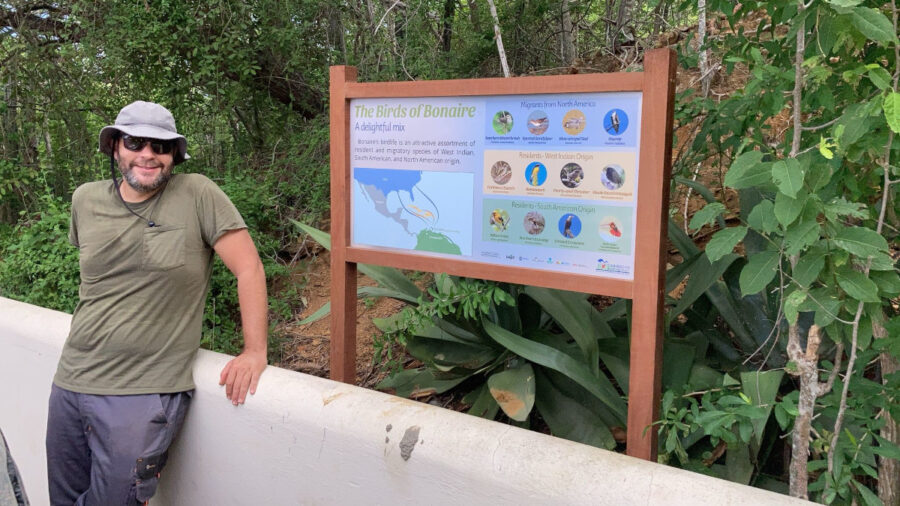
Next Steps for the Caribbean Birding Trail in Bonaire
The work doesn’t stop here! The next phase of the CBT in Bonaire includes building bird-viewing platforms with shade and benches to further enhance visitor experiences and encourage even more people to discover and enjoy the island’s spectacular birdlife. With its iconic flamingos, abundant waterbirds, and striking landbirds, Bonaire is quickly becoming a top destination for birders—bringing a welcome boost to the local economy and creating new livelihoods for trained guides.
Visit Bonaire—and Explore the Caribbean Birding Trail
Today, Bonaire’s birds and wetlands are not only celebrated by scientists and tour guides, but also by visitors, local residents, and young birders. These new interpretive signs are helping to establish Bonaire as a must-see stop on the Caribbean Birding Trail, while raising awareness of the vital role this island plays in regional and global conservation.
Come see for yourself—Bonaire’s birds are waiting to welcome you.
Thanks to all the members of the CBTB group who shared their beautiful bird photos with us for potential use on the signs.
You can find the signs in the locations marked on the map below!
About the Caribbean Birding Trail
The CBT connects people to the region’s extraordinary birds, landscapes, and cultures through sustainable bird and nature tourism. Training local guides and developing low-impact infrastructure are central to the CBT’s mission—helping to foster authentic experiences that benefit local communities while encouraging the protection of birds and their habitats across the region.
Acknowledgements
We are deeply grateful to Cargill Salt LLC, and especially Daniel DeAnda, for their long-standing partnership and generous support in funding the development, design, printing, and installation of these beautiful interpretive signs.
Special thanks to our long-time collaborator, Fernando Simal of WILDCONSCIENCE, for his dedicated leadership on the ground and hands-on work installing the signs. We are also immensely grateful to Juan C. Riveros, whose stunning designs brought the vision to life—and who remained endlessly patient throughout many rounds of feedback and edits.
We sincerely thank the members of the Caribbean Birding Trail Bonaire (CBTB) group, whose thoughtful input guided the selection of sign locations and helped shape the content. Their local knowledge, enthusiasm, and generosity were key to the success of this project.
Finally, we thank Environment and Climate Change Canada for their generous funding support to assist with the planning and development of these signs.
